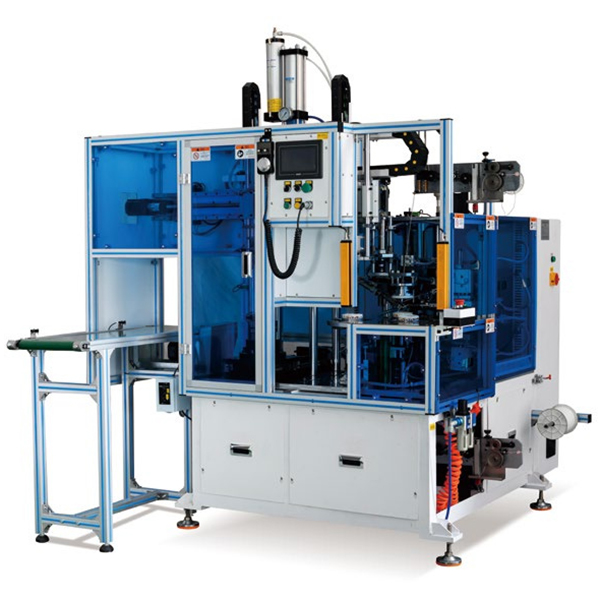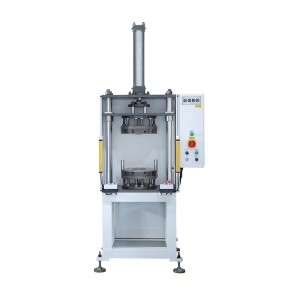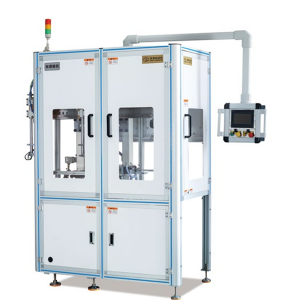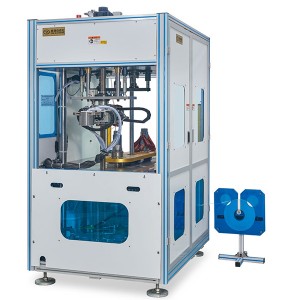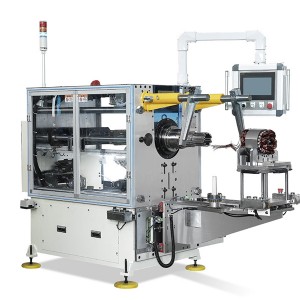Three-Station Binding Machine
Product Characteristics
● The machine adopts a three-station turntable design; it integrates double-sided binding, knotting, automatic thread cutting and suction, finishing, and automatic loading and unloading.
● It has the characteristics of fast speed, high stability, accurate position and quick mold change.
● This model is equipped with automatic loading and unloading device of transplanting manipulator, automatic thread hooking device, automatic knotting, automatic thread trimming, and automatic thread suction functions.
● Using the unique patented design of the double track cam, it does not hook the grooved paper, does not hurt the copper wire, lint-free, does not miss the tie, does not hurt the tie line and the tie line does not cross.
● The hand-wheel is precision-adjusted, easy to debug and user-friendly.
● The reasonable design of the mechanical structure makes the equipment run faster, with less noise, longer life, more stable performance, and easier to maintain.
Product Parameter
| Product number | LBX-T2 |
| Number of working heads | 1PCS |
| Operating station | 3 station |
| Outer diameter of stator | ≤ 160mm |
| Stator inner diameter | ≥ 30mm |
| Transposition time | 1S |
| Adapt to the stator stack thickness | 8mm-150mm |
| Wire package height | 10mm-40mm |
| Lashing method | Slot by slot, slot by slot, fancy lashing |
| Lashing speed | 24 slots≤14S |
| Air pressure | 0.5-0.8MPA |
| Power supply | 380V three-phase four-wire system 50/60Hz |
| Power | 5kW |
| Weight | 1500kg |
| Dimensions | (L) 2000* (W) 2050* (H) 2250mm |
Structure
The structure of the clamping head in the automatic binding machine
Let's take a closer look at the key component of the automatic wire binding machine - the collet. The mechanism works together with the nozzle to wind the enameled wire before the coil winding process begins. It is critical that the wire breaks away from the root of the bobbin pin to avoid the end of the wire entering the groove of the bobbin when the spindle is spinning at high speed, resulting in product rejection.
Once the product is complete, wind the wire onto the collet and repeat the process. To ensure consistent function, the collet must always be disconnected from the stud. However, due to the difference in height and diameter ratio caused by the overall structure of the machine, it may be deformed and broken.
To solve these problems, all three parts of the chuck are made of high-speed tool steel. This material has remarkable properties such as toughness, wear resistance and high strength, which are very suitable for design and processing requirements. The wire-removing guide sleeve of the collet is designed to be hollow, with a groove sleeve at the bottom, which is nested with the wire-removing baffle. The pay-off barrel is the executive element of the pay-off baffle, which uses a linear bearing as a guide to drive the pay-off guide sleeve up and down to repeatedly pay off the waste silk.
The automatic wire binding machine is specially designed for the production of coil equipment for various devices such as mobile phones, telephones, earphones, and monitors. With the increase in the replacement frequency of mobile phones and display devices, the production scale of these devices is expected to expand in the next few years, and the use of wire binding machine technology and equipment has become a general trend.

